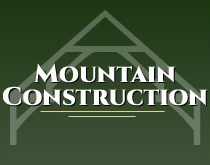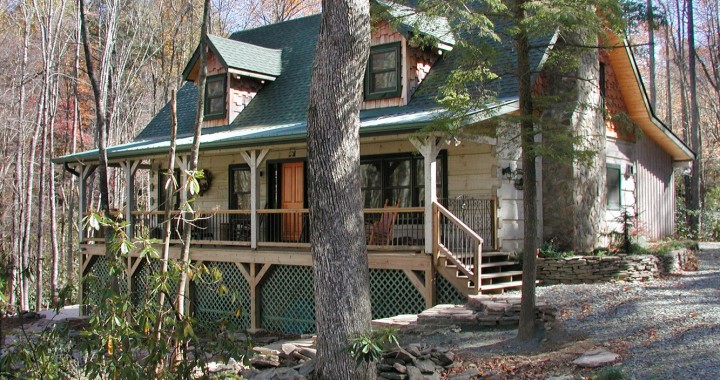For more information on Hearthstone or a free consultation CONTACT US
Reprinted from Hearthstone, Inc.'s Construction and Maintenance Manual © 1999
This article outlines the processes involved in the early stages of preparing for your Log or Timber Frame Home.
1. Changes and Revisions
We work hard for you in order that your new home will be exactly as you've planned and dreamed it to be. We are always prepared to adjust your order and make changes, deletions or additions to your ordered package. However, because of commitments to our suppliers and manufacturing schedules, all changes and revisions must be prior to confirmation and the assignment of a delivery date. Refer to your Customer Purchase Agreement for details.
2. Permits
After locating and purchasing the right piece of property, you are ready to begin the process of obtaining permits. In many locations, general building and zoning permits are required by cities, towns and counties before you can begin work on your home. Requirements for issuance of permits may include energy code calculations, plumbing, electrical, mechanical, flood control and site plans. Permits may be required for occupancy, septic systems, roads, well drilling, wood cutting, tree removal and others. Many of these may not be necessary, however it is the owner's responsibility to check with local officials to pre-determine what code requirements will apply. Since your blueprints should be finished before making application for a building permit, check with your local building officials at the city hall or county courthouse and relay specific requirements to your Hearthstone Representative prior to beginning blueprint work. An advance visit will undoubtedly save you time and money in undoing construction errors which violate local ordinances.
Most jurisdictions regulate the stage of completion a house must reach before you can move in. Your lender may also require a final inspection of the home before providing long-term financing. Be sure to determine at what stage of completion you can take occupancy and when the final inspection will be performed.
3. Codes and Inspections
In many areas periodic code inspections are required with the safety of the homeowner in mind. Do not be intimidated by building codes. With all the responsibilities of home building, it is best to learn what the codes are and abide by them. Each inspector is different; some can be of great help to you, others can be more difficult to work with. Try to use them for help and support in your project. Whenever you have a question, ask your local building official. It is important to incorporate the codes as you begin any phase of construction.
Hearthstone's structural methods and thermal envelope have been reviewed and found to be in compliance with Southern Building Code Congress International. This report is available for submission to financial institutions as well as building officials. Hearthstone has also been reviewed by the Department of Housing and Urban Development (HUD) and has been issued a Structural Engineering Bulletin. This qualifies our Hearthstone Log Homes for Federal Housing Authority (FHA) insured loans, which generally offer lower interest rates. For those who are in areas where Southern Building Code compliance is required, be sure to include a copy of Hearthstone's SBCCI report along with your blueprints, structural calculations, the Hearthstone Construction manual and any other detail drawings and specifications. If you are in an area that requires another national building code system, you will need to determine if a Southern Building Code report will be acceptable by reciprocity. Note: If your home is to be constructed in a high wind or seismic area, please follow the steps outlined in our Article: High Wind Load and Seismic Areas.
4. Securing Financing
Securing the financing needed to fund your building project should be undertaken as early in the process as possible. Since the amount of loan that you can "qualify" for could influence the cost of the home you select, you may wish to have a loan officer "pre-qualify" you. The loan officer could give you specific information such as: the maximum amount of loan you qualify for, the cash needed for down payment, closing costs to expect, and types of loan programs available.
You can find loan officers at banks, savings and loan institutions, credit unions, mortgage lenders and brokers. In order to "pre-qualify" you, the loan officer will need some specific information from both you and the co-borrower (if any). Information regarding your income and your monthly debts will be needed.
The same loan officer that offers the "pre-qualifying" service may also wish to make you either the construction loan or the permanent (mortgage) loan. Usually the construction lender requires assurance, in the form of a commitment letter, from the permanent lender. Therefore, you need to apply for the permanent (mortgage) loan first.
When you apply for the loan you will need to have a cost estimate of the proposed building project. This may be in the form of a contract with your builder or a detailed written cost estimate prepared by yourself (if you are planning to be your own general contractor).
Other items that may be requested by the loan officer are: a set of blueprints, copies of tax returns, W-2's, pay stubs, deed and survey of the land, etc. The loan approval process can be a lengthy one. As long as three months can be used up while waiting for your loan approval.
Once your loan has been approved and the construction loan closing has occurred, then you can start your property improvements. It is important that you NOT begin any property improvements or construction prior to the construction loan closing.
5. Choosing a Builder/Contractor
There are three basic ways to build your log home. First, you can hire a general contractor and turn all responsibility for administration and construction over to a professional builder. Second, you can act as your own general contractor, oversee the project and subcontract the construction work in stages. Finally, you can do all the work yourself.
Before you decide which way is best for you, think about how involved you can become in terms of your family needs, your financial position, how much time you can take away from your job as well as your emotional and physical resources. Your projected building schedule must also be considered in the decision. Your schedule may be the determining factor in deciding exactly how much of the work you will do yourself. A helpful hint: Experienced and qualified builders who have prior experience in building Hearthstone Homes can be a definite advantage. Contact your sales representative for references.
For help in choosing a builder or subcontractor, for all or part of the work, we offer the following suggestions: call your local National Association of Home Builders office; check with your local building suppliers for recommendations; ask your banker for referrals; check with family or friends who have had prior experience in selecting contractors.
Caution: The lowest quote may be the most expensive in the long run. You generally get what you pay for!
To determine the quality of a builder, determine how long he has been in business and investigate his reputation. Ask for a list of previous customers. Telephone the persons listed and make appointments to visit their homes. Determine if there were generally satisfied with the builder and, if not, ask specifically why not. Was the builder helpful? Did they consider his prices in line with the quality of his work? We at Hearthstone ship the highest quality materials, however, the finished structure will only be as good as the quality of the workmanship put into it. In order to protect your investment, select a builder who follows professional construction standards and techniques.
Pre-Construction Task Outline
The following is a basic checklist of pre-construction responsibilities. Review these items carefully, and then decide how much of this work you will assume yourself, and how much you will assign to the contractor:
-Set your schedule and prepare a detailed budget.
-Complete all financial arrangements.
-Secure all zoning and building permits.
-Be sure your blueprints reflect exactly what you want to build.
-Develop a list of builders and sub-contractors.
-Make the necessary arrangements.
-Secure all bids and materials prices.
-Provide for temporary utilities such as water and sewage facilities.
-Make arrangements for trash and construction debris removal.
-Install a temporary electric service pole or provide a generator.
-Install a job phone (optional)
6. Insurance
Many lenders require certain types of insurance coverage before you begin construction. Construction, by nature, has inherent risks. If you are working with a builder, be sure that he has liability and workman's compensation insurance protection during the construction of your home. If you are the owner/builder, you may be required to obtain the following coverage: Title Insurance to guarantee that ownership of the property is as stated in the deed; Public Liability Insurance to protect yourself against public injury at the construction site; Builder's Risk Insurance to cover damage or theft during construction; Workmen's Compensation Insurance to cover any employees you may have working on your home; and Equipment and Vehicle Insurance to cover any equipment used in construction. We recommend consulting with your insurance agent in advance for coverage best-suited to your needs. If you are uninsured and a loss or accident occurs on your jobsite, you are legally responsible and subject to litigation.
Mountain Construction is a full service custom builder offering Log, Timber Frame, Structural Insulated Panels nationally as well as local New Construction of any type and Remodeling and Restoration services. We are NAHB Certified Green Professionals.
To find out how we can help you build or remodel your home CONTACT US.


